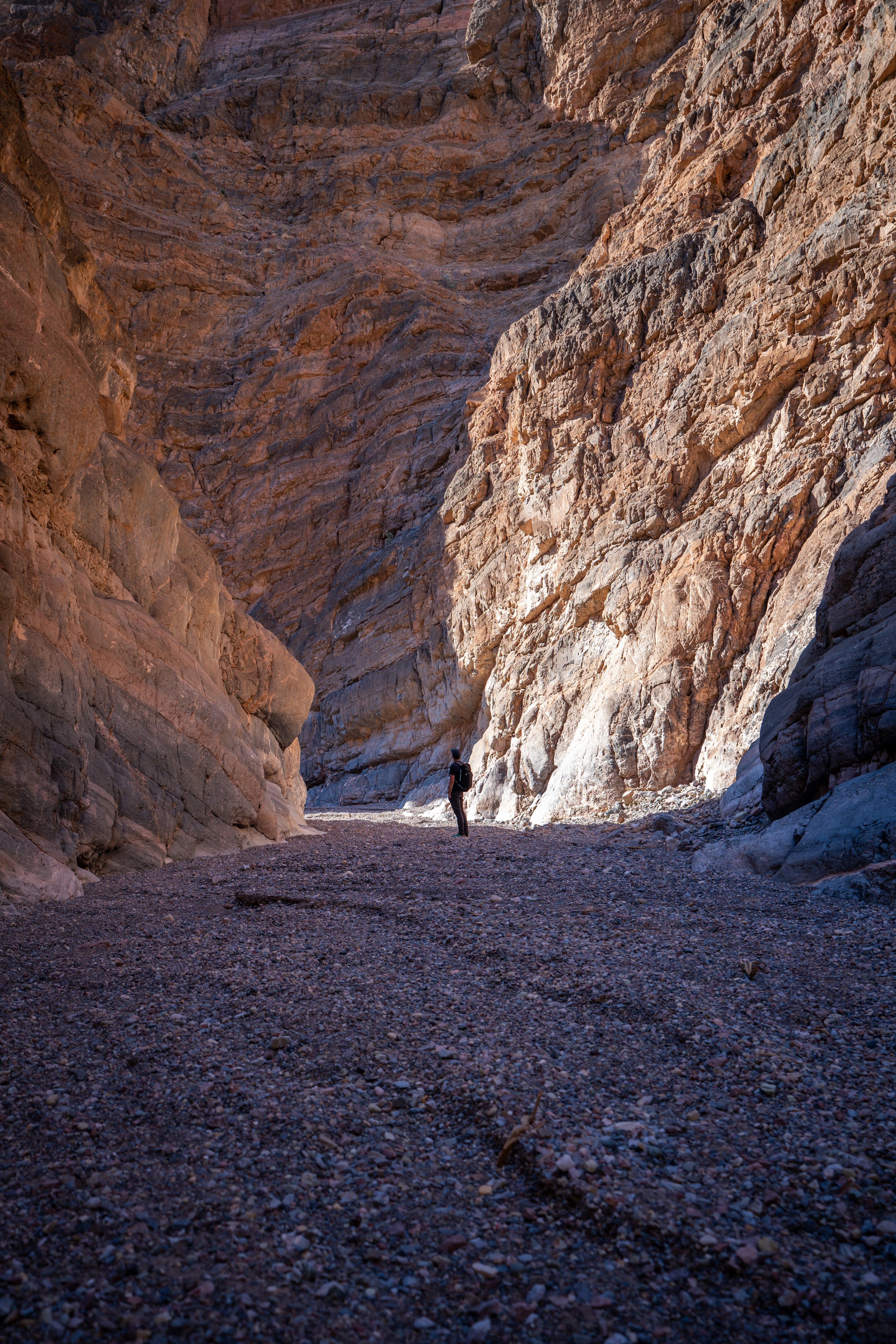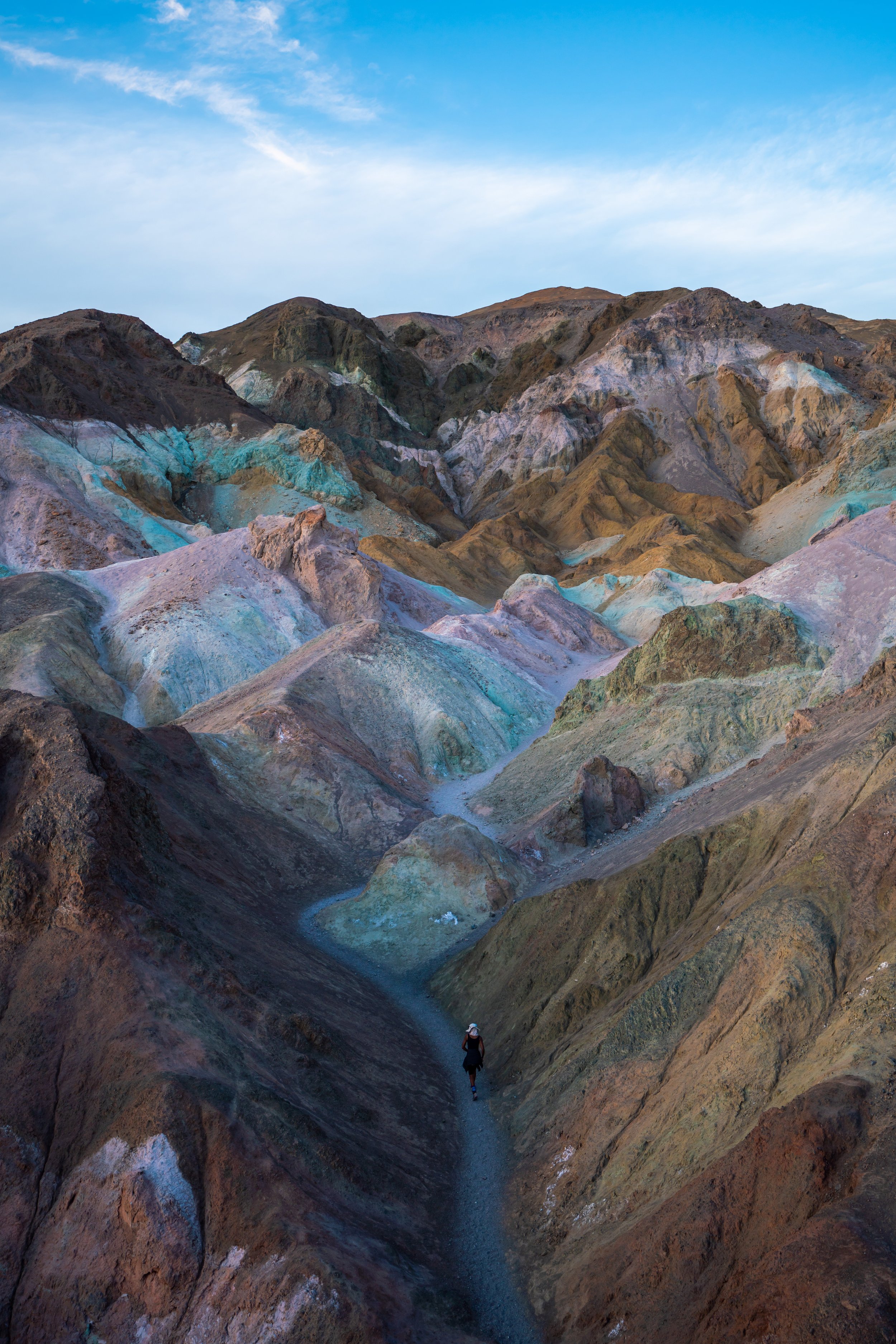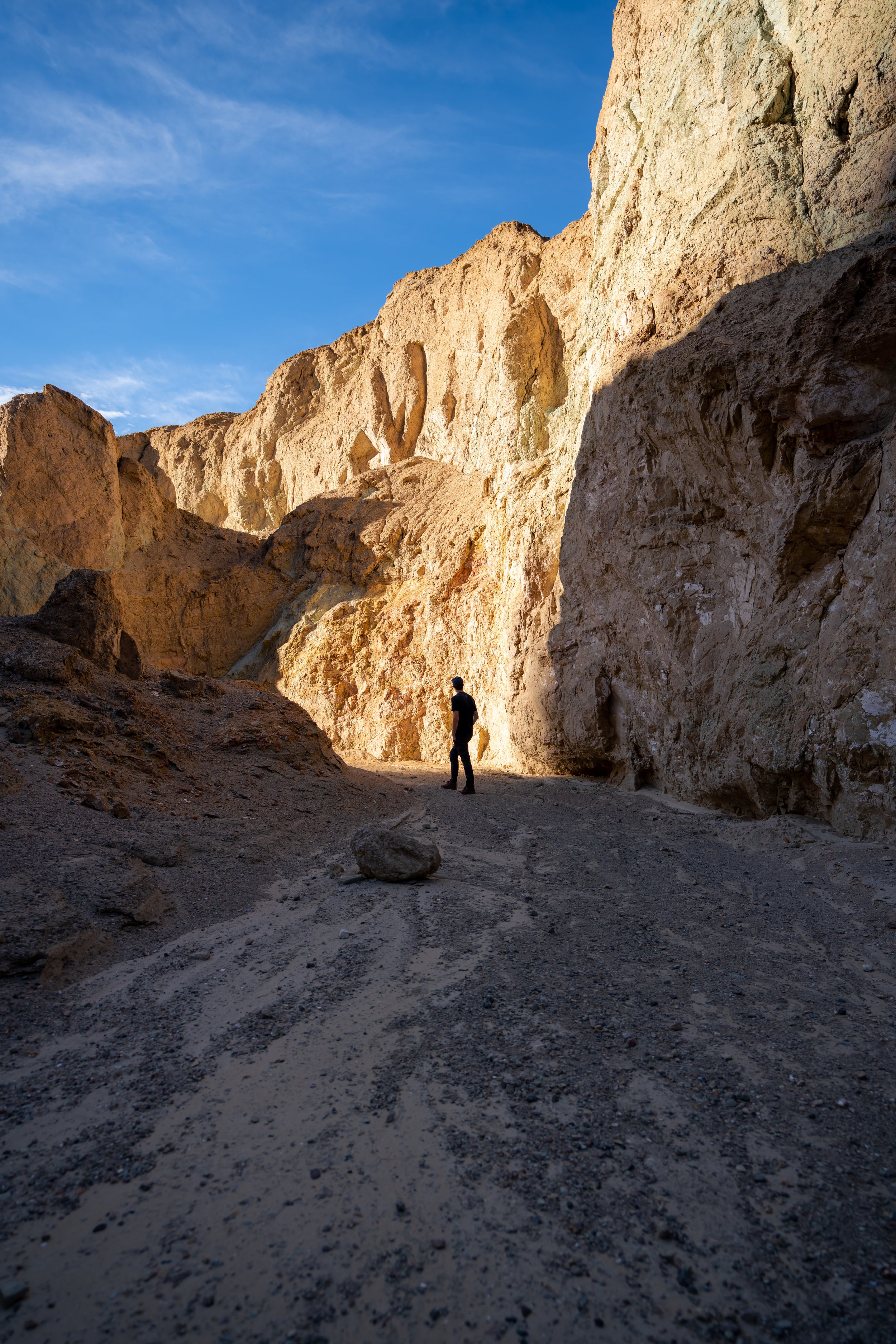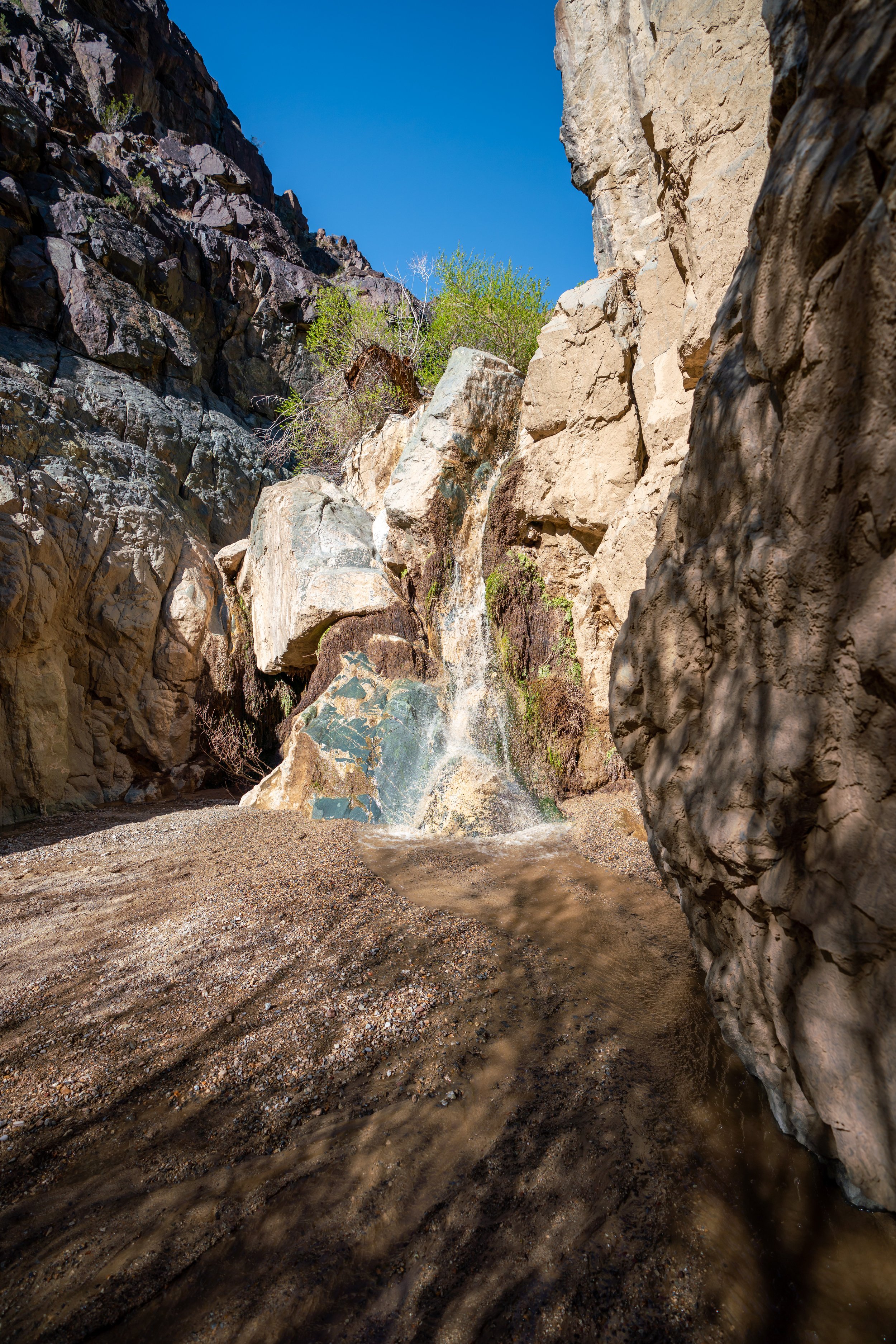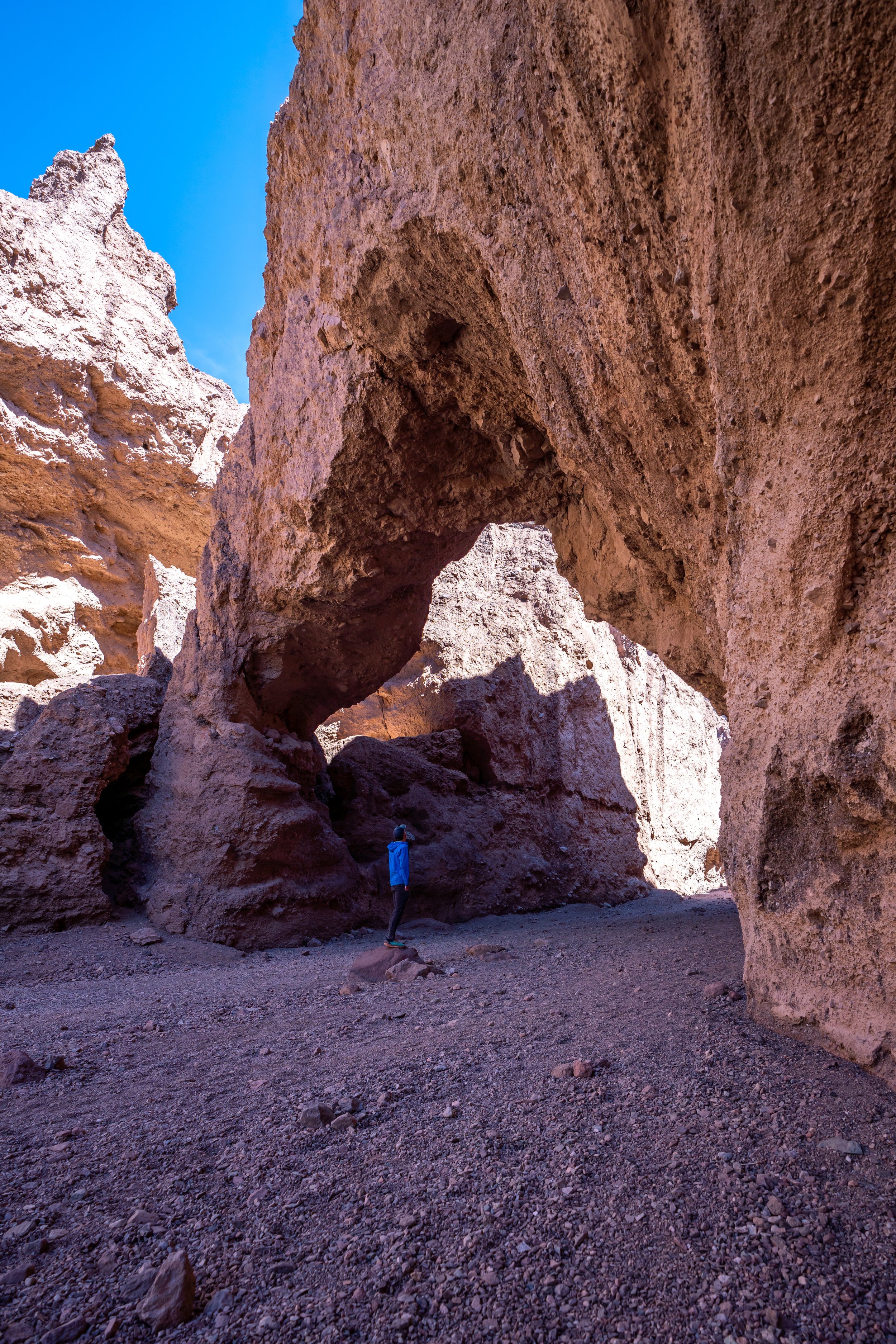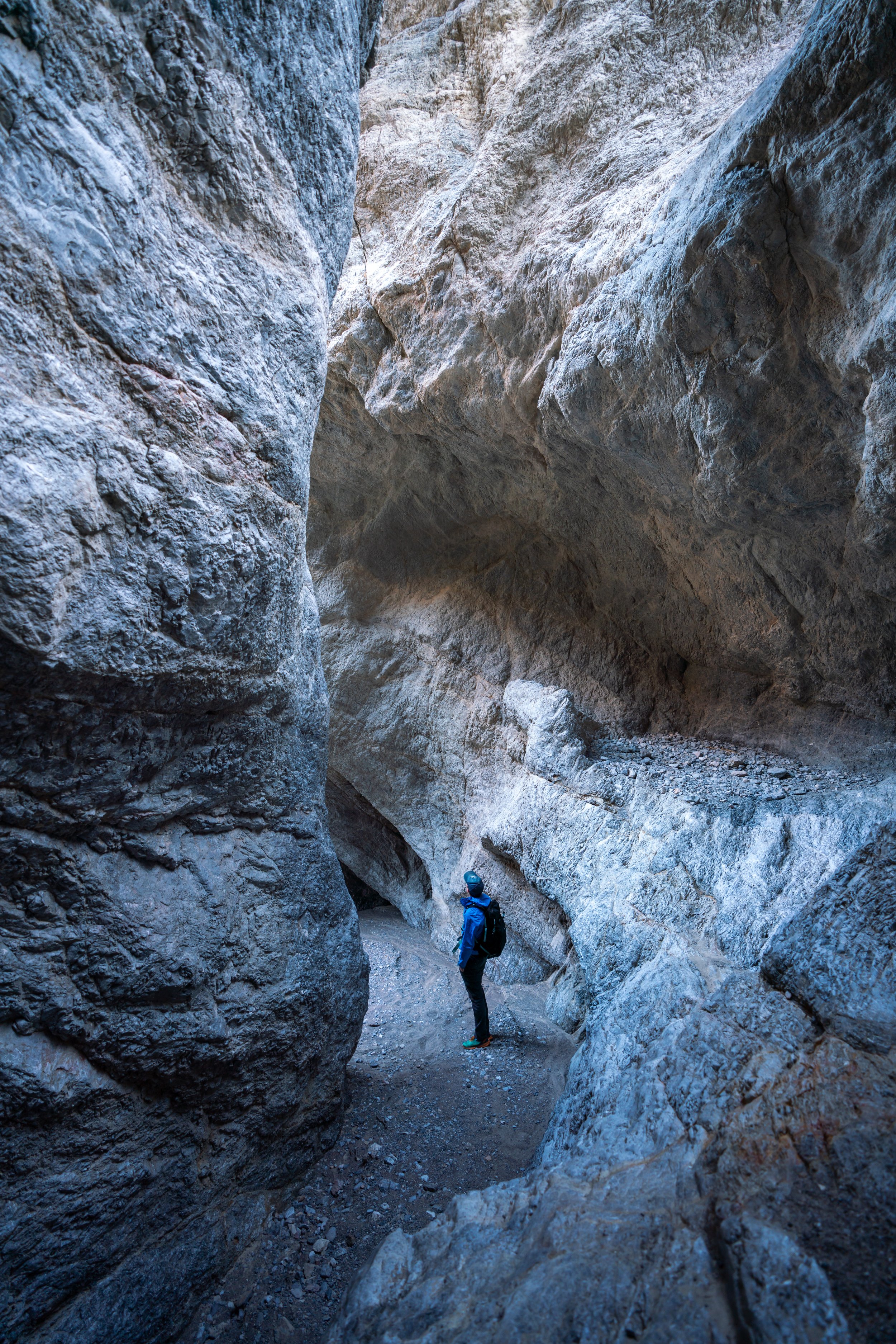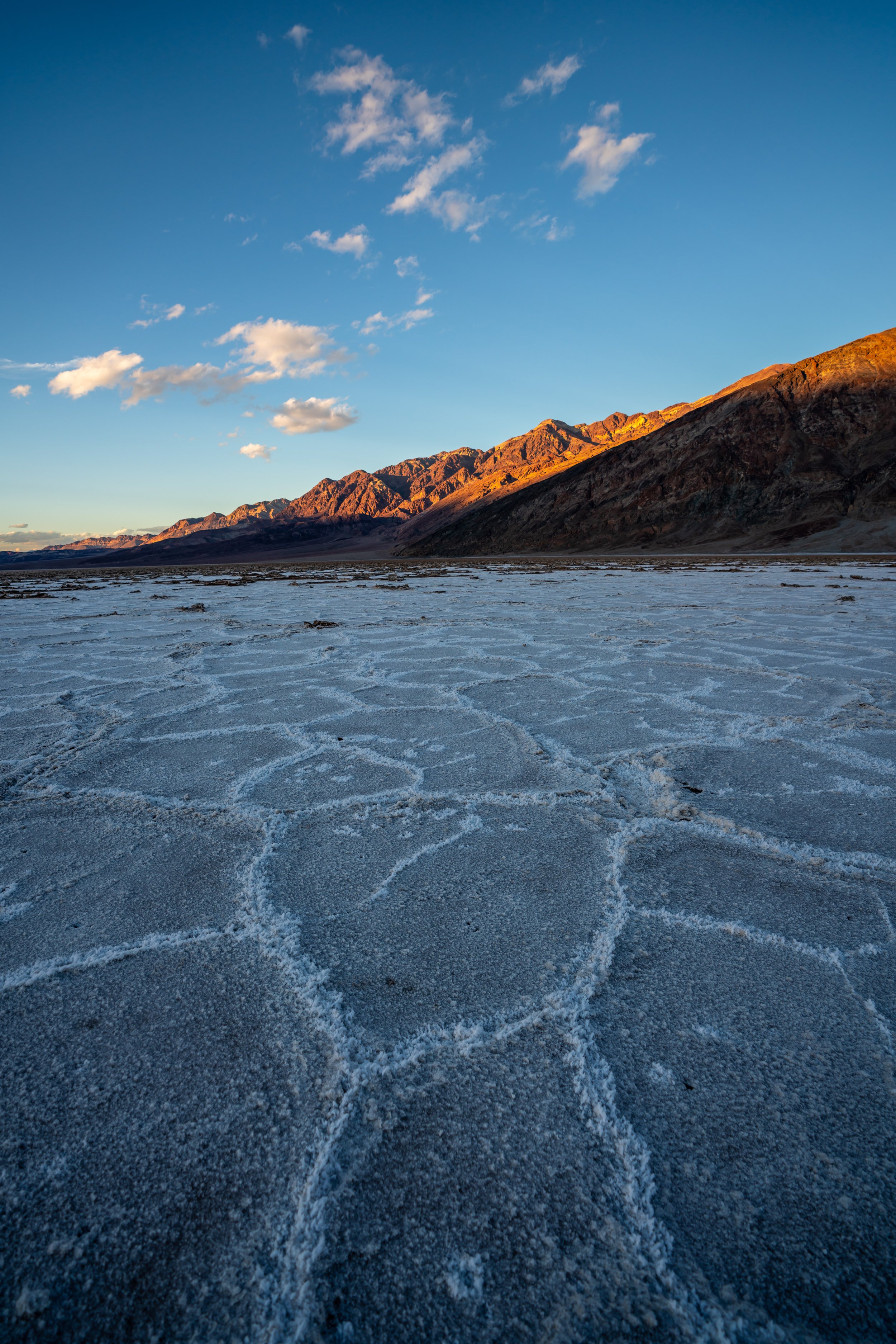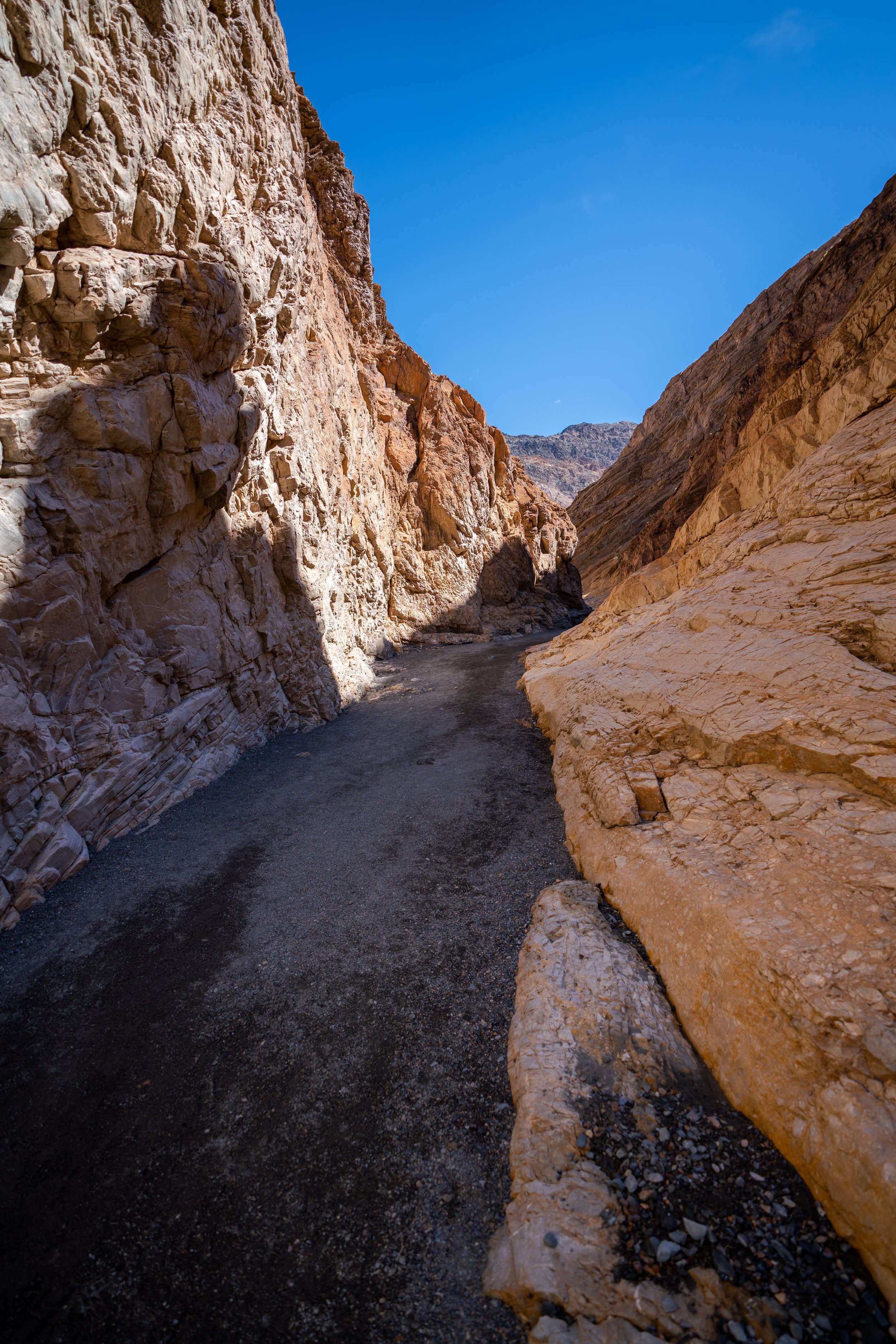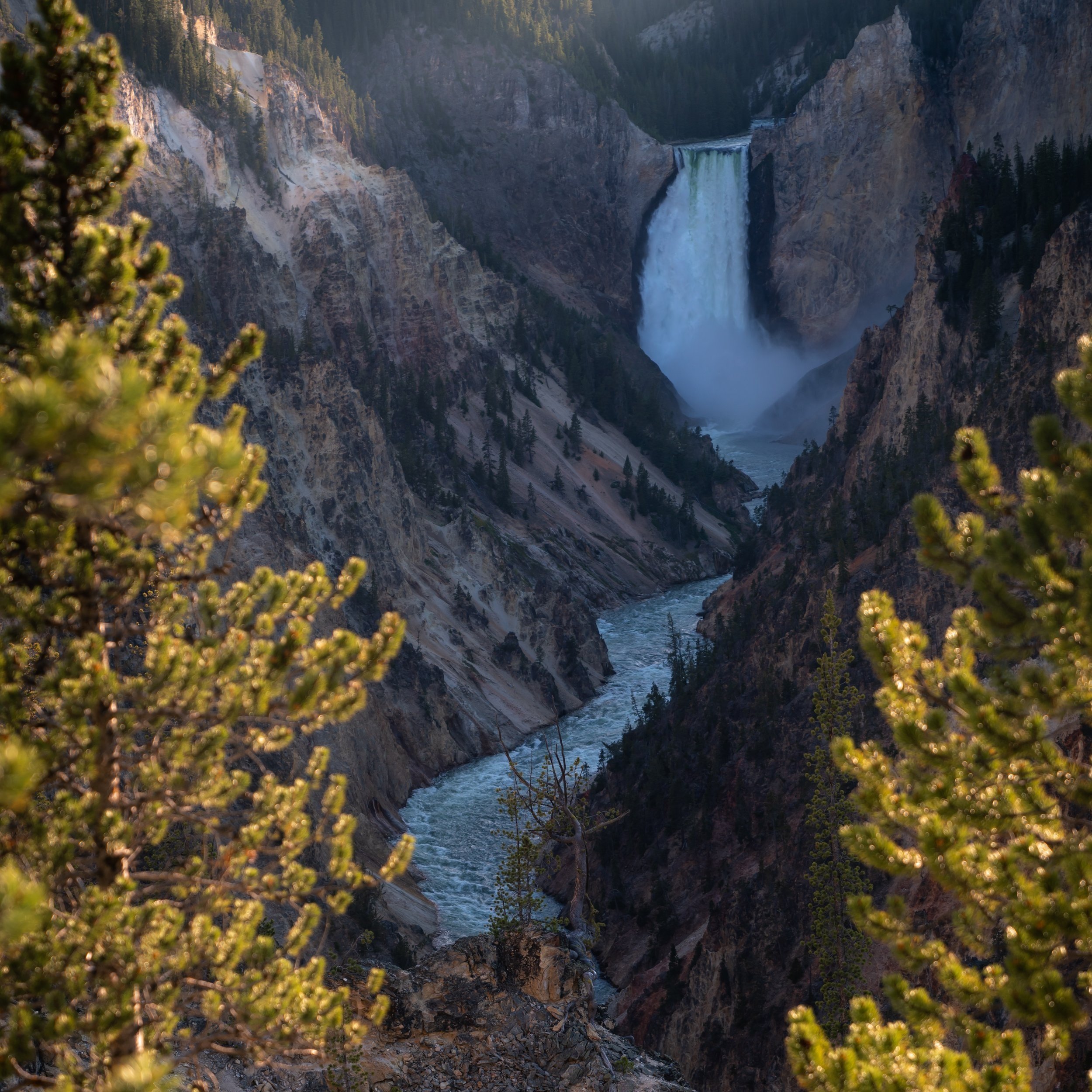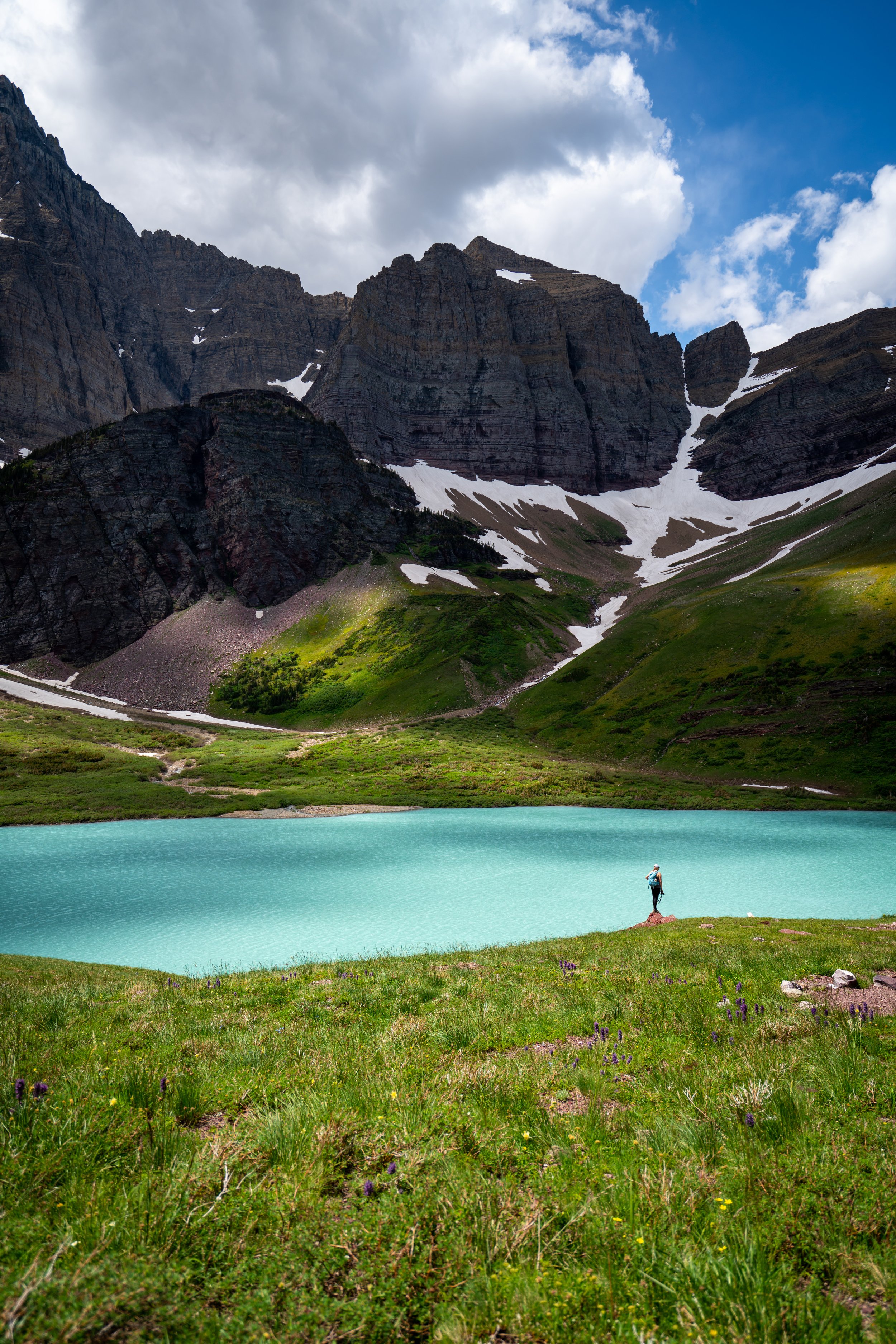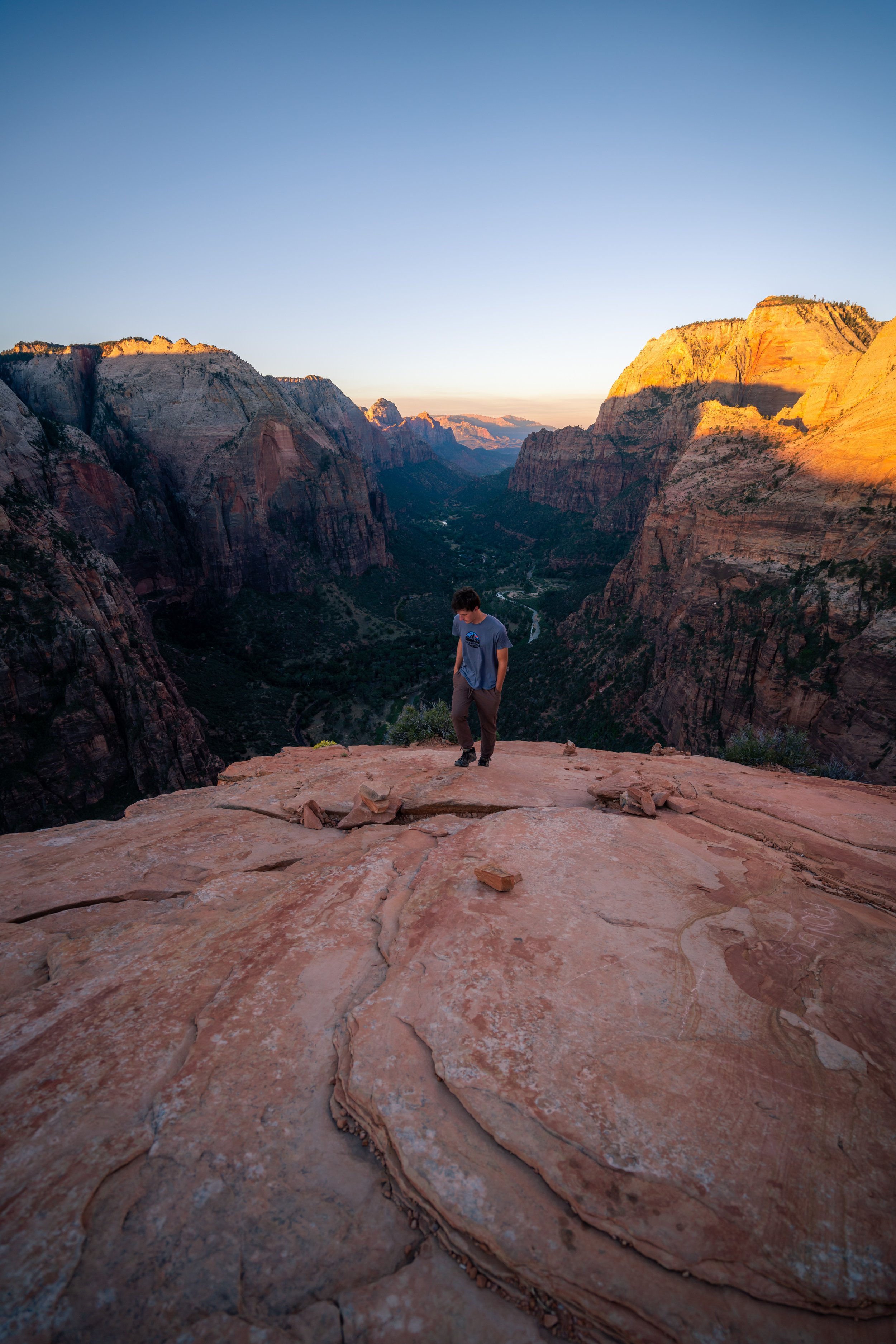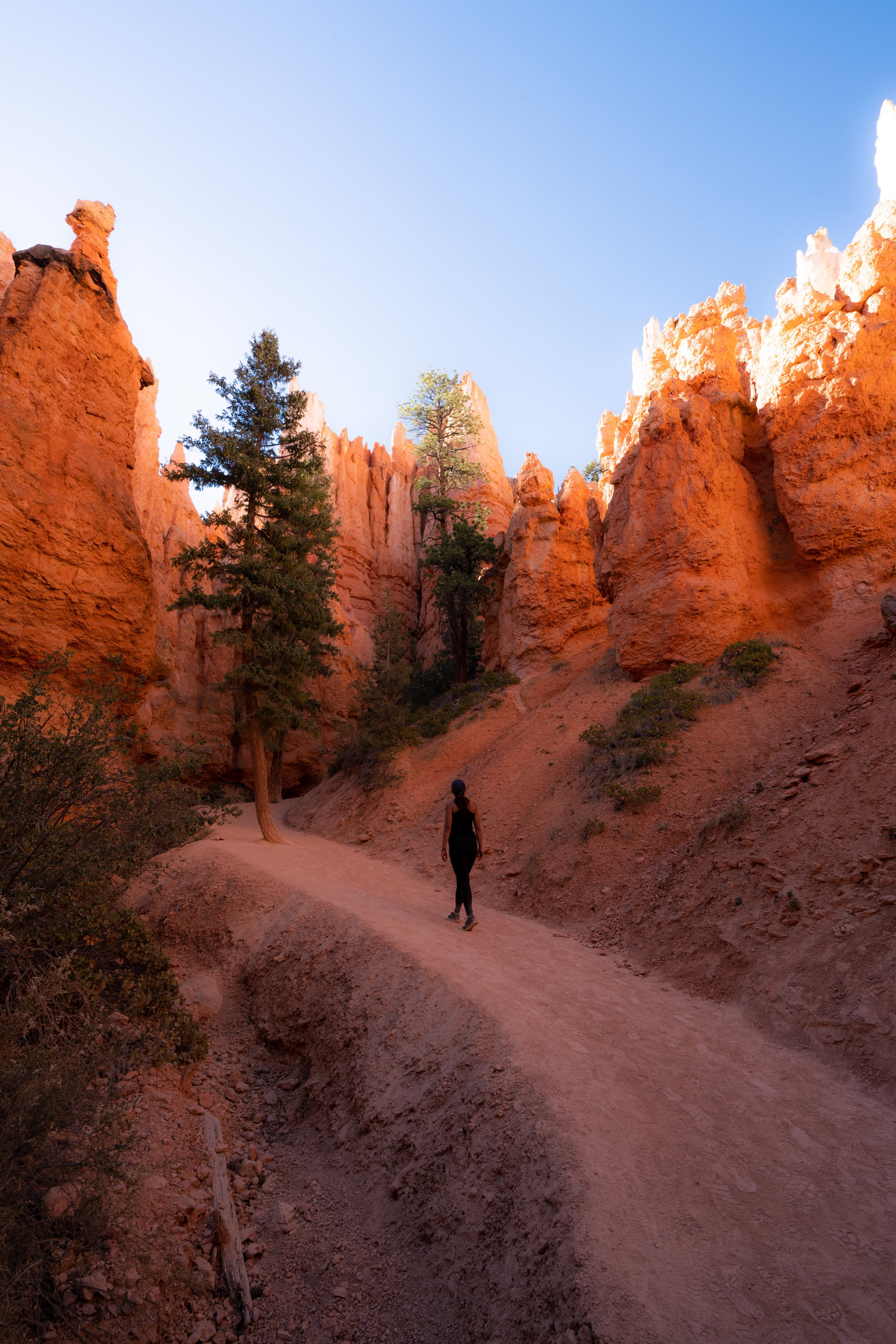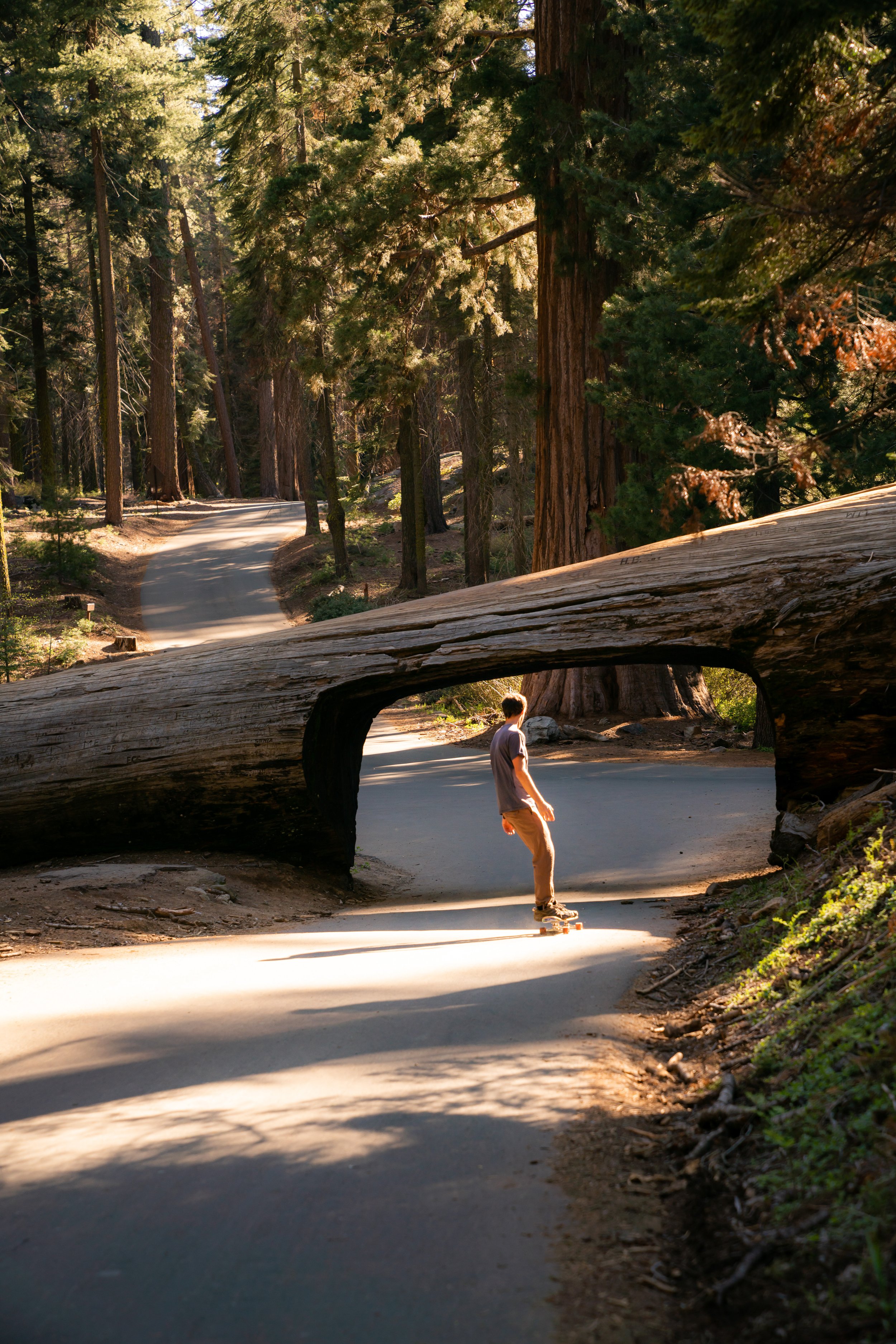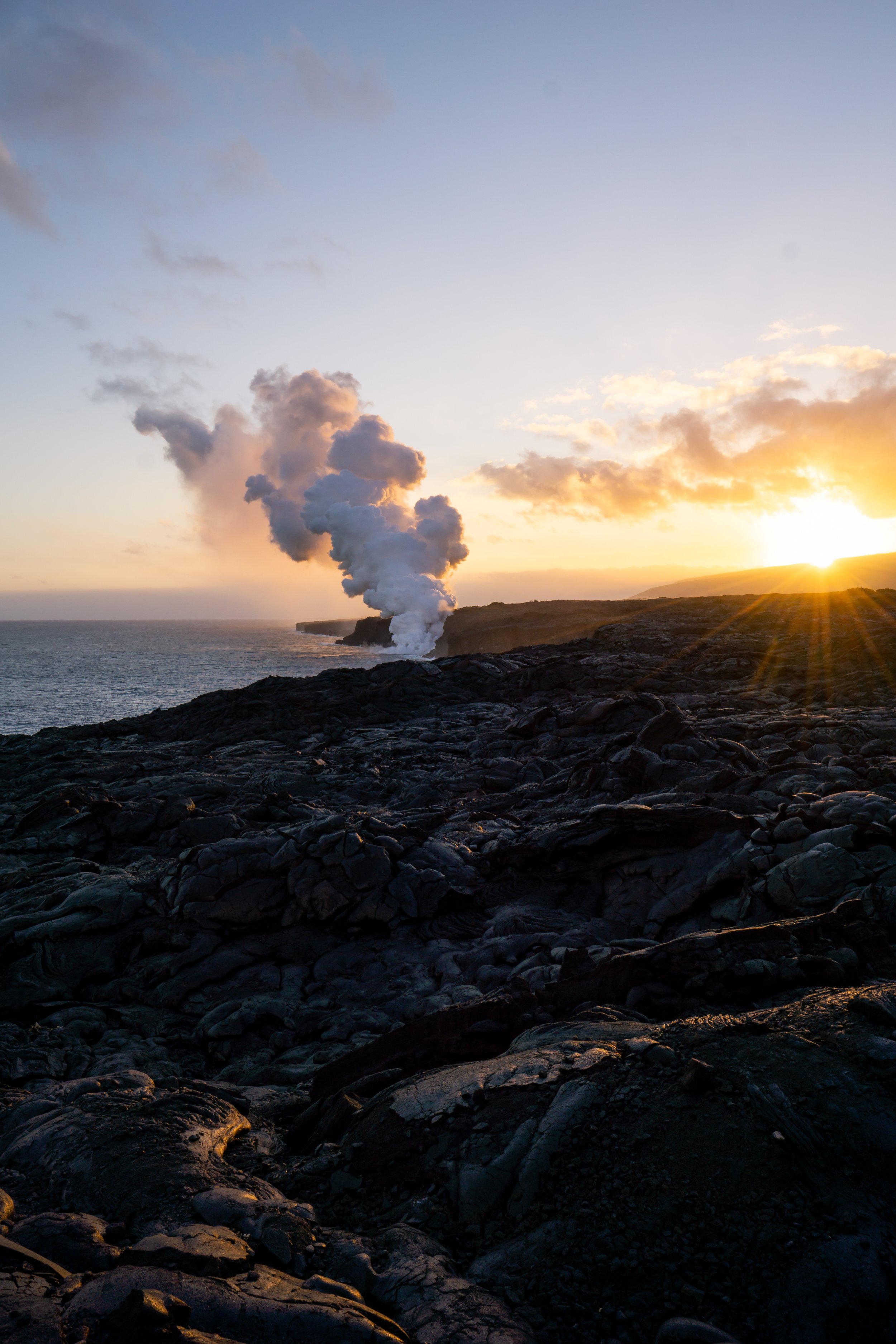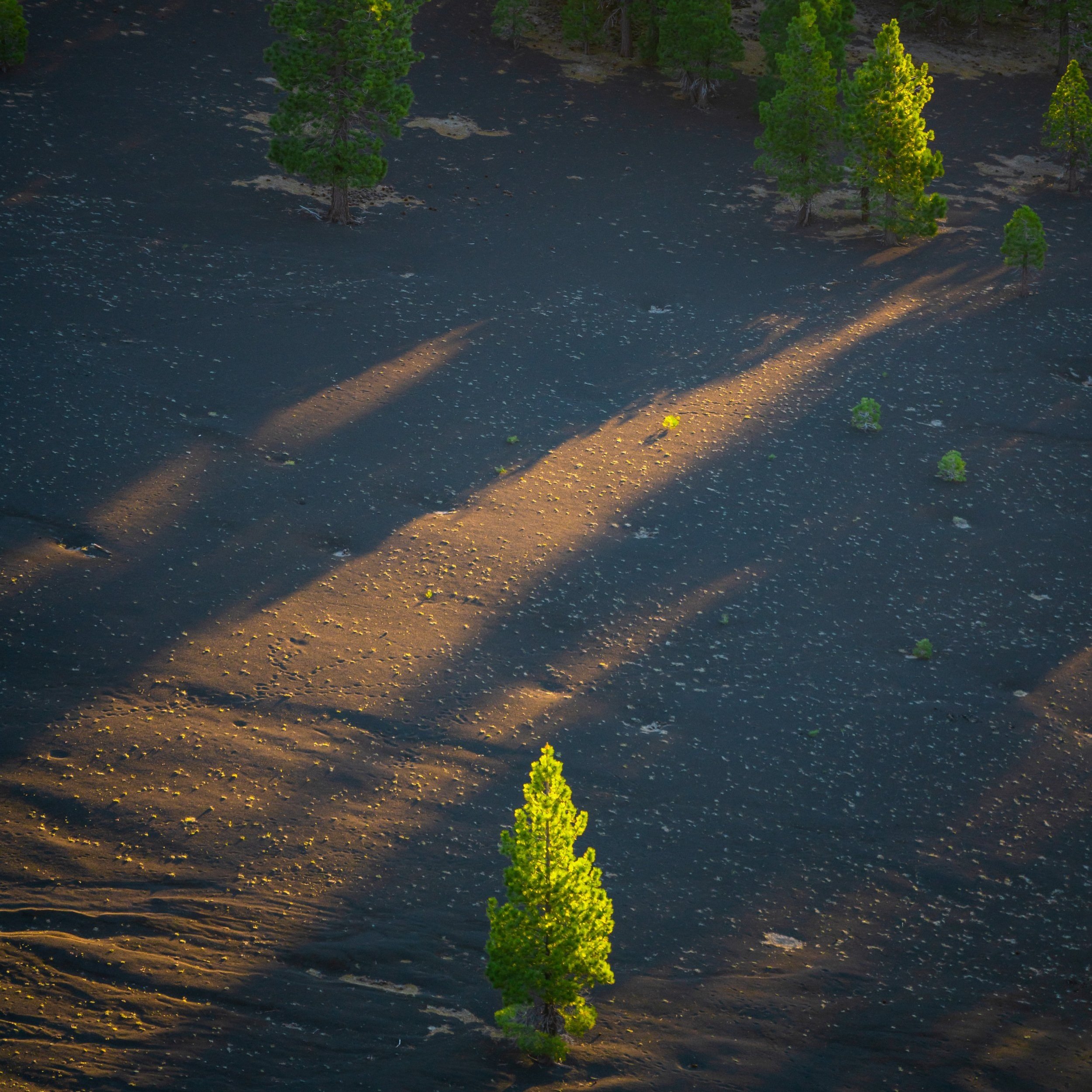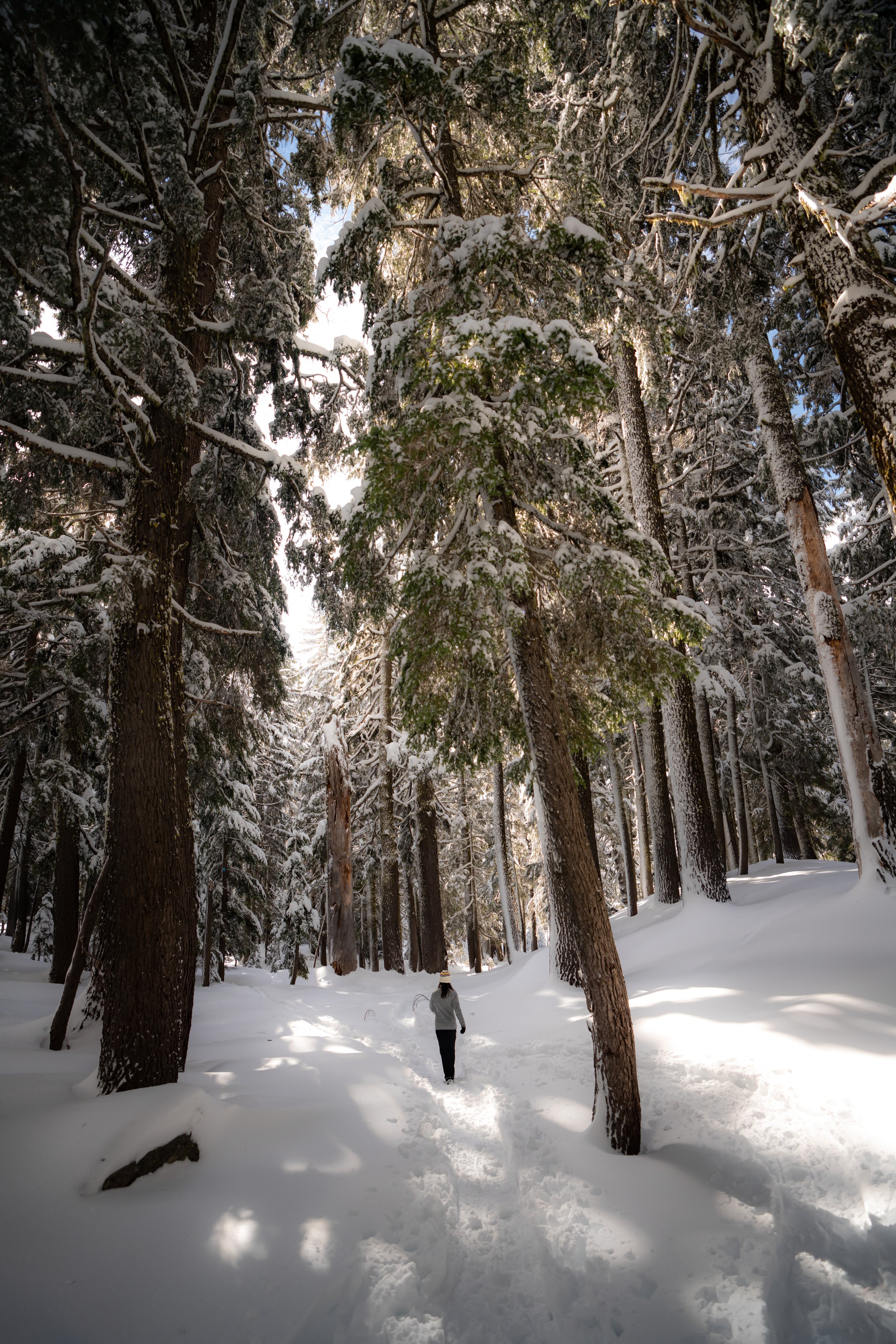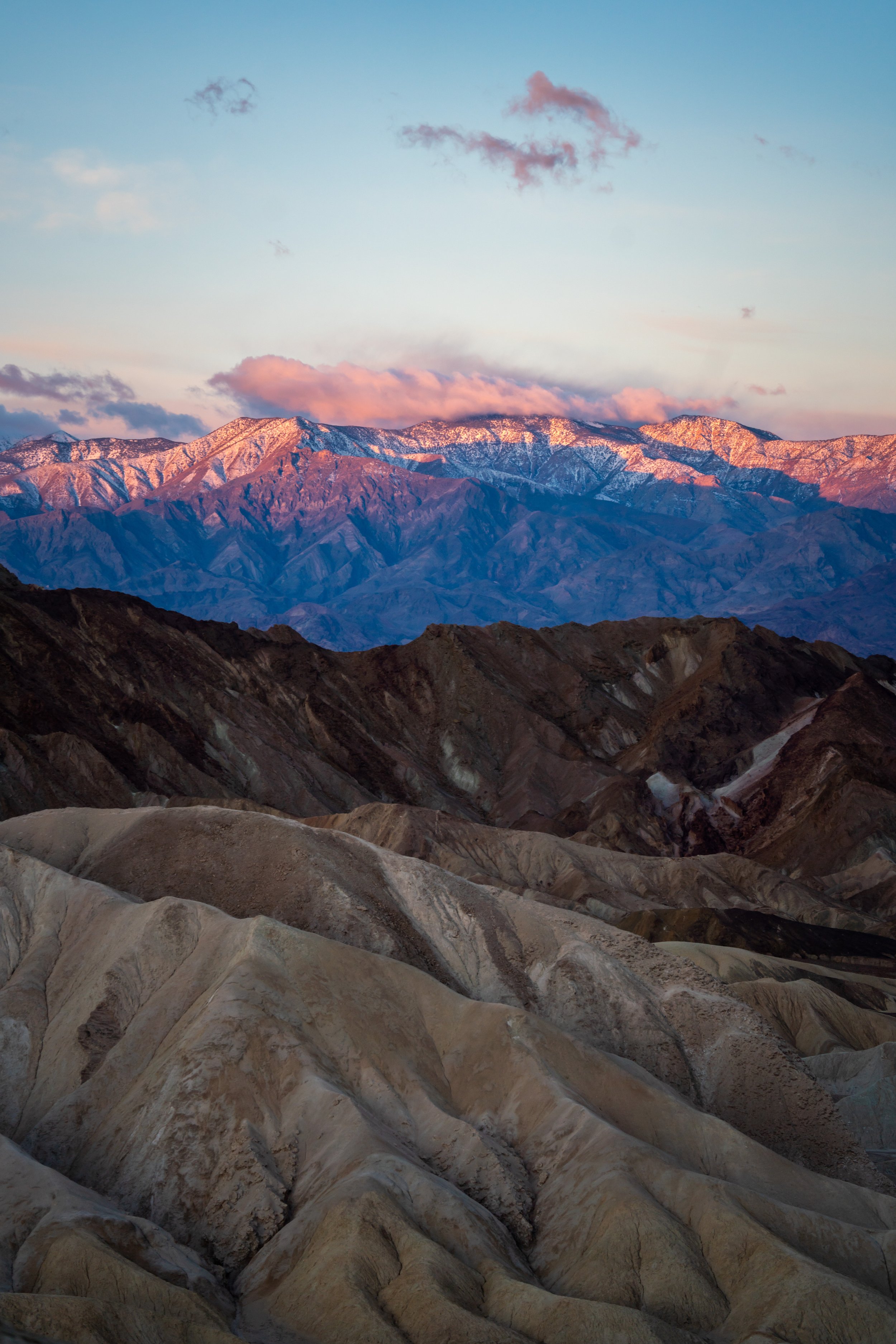Hiking the Ubehebe Crater Trail in Death Valley National Park
Distance: 1.0 - 2.8 miles / 1.6 - 4.5 km
The Ubehebe Crater Trail in Death Valley National Park is one of the most uniquely beautiful day hikes in the park, as the loop around the large volcanic crater offers a glimpse into what Ubehebe Crater and the greater area looked like when it was erupting!
That said, the distance above is variable because it depends entirely on how much of the Ubehebe Trail you decide to hike.
By this, I mean that the out-and-back hike to Little Hebe Crater is only 1.0 mile (1.6 km) roundtrip. However, if you decide to hike around Little Hebe Crater and the Ubehebe Crater Loop, that totals 2.3 miles (3.7 km), including an optional 0.5-mile (0.8 km) hike to the bottom of the crater, for a total of 2.8 miles (4.5 km).
In any case, the Ubehebe Crater Trail is one of my favorite day hikes within Death Valley National Park, as only a fraction of park visitors make the long 56.1-mile (90.3 km) drive to Ubehebe Crater since it’s located on the far northern end of the park.
Ubehebe Crater Trailhead Parking
Parking for the Ubehebe Crater is located in a small, paved parking lot atop Ubehebe Crater Road, right on the crater rim.
Know that the trailhead parking can be a little tight, but it’s nowhere near as busy as other places in the park, such as the Golden Canyon Trail near Furnace Creek.
Google Maps Directions: Ubehebe Crater Trailhead
Hiking Checklist - Death Valley
Here is a complete list of must-have things that you will want for any hike in Death Valley National Park.
Osprey 3L Water Bladder - The Osprey 3L water bladder is the most universal hiking and backpacking water bladder on the market, and it’s my go-to because of the slide-off seal that allows it to be quickly filled from the top. Additionally, individual parts are easily replaceable, such as the bite valve.
Blister / Heel Protectors - I swear by these cheap, amazing heel protectors to prevent blisters for nearly every kind of hiking and backpacking that I do!
Black Diamond Headlamp - Personally, I recommend the Black Diamond Storm because it is one of the brightest, lightest, and longest-lasting headlamps on the market—and trust me, the weight-to-battery-life ratio really does matter!
Hiking / Trail Running Shoes - Depending on the type of trail, I prefer to use either the Keen Targhee for longer, more rugged hiking or the HOKA Zinal Trail-Running Shoe for lighter, less intense trails. In either case, both have been amazing to me for many years across countless environments, and both can be found in men’s and women’s sizes. - (Men’s Keen / Women’s Keen) (Men’s HOKA / Women’s HOKA)
Waterproof Rain Shell - You never know when it may rain, and I’ve learned over the years that a rain shell is far better than a rain jacket. By this, I mean that it’s best to have something that the water will roll right off of, which is why I recommend the Patagonia Torrentshell 3L available in both men’s and women’s sizes.
Sun Shirt w/ Hood - A quality sun shirt can be your best friend on a trail with minimal shade, which can be found in both men’s and women’s sizes.
High SPF Sunscreen - Packing high-SPF sunscreen is a must for long days outside!
Hiking the Ubehebe Crater Trail
If you're looking for a beautiful place to start or end your day, the panoramic views at Ubehebe Crater would equally make for a great hike at either sunrise or sunset.
Immediately after leaving the parking area, the trail climbs up about 200 ft. (61 m) in elevation to the rim of Little Hebe.
The 0.5-mile (0.8 km) distance to Little Hebe Crater on the sign is only the one-way distance to the crater.
At the split for Little Hebe, you can choose to go left to continue around the main Ubehebe Crater or go right to see the Little Hebe Crater.
Little Hebe Crater Loop
The loop around Little Hebe Crater only adds another 0.25 miles (0.4 km) to your overall hike.
Ubehebe Crater Loop
The photo below is back on the main Ubehebe Crater Loop Trail.
Below are the two craters from the top of the hill in the photo above.
If you look closely, you can see the three main trails that descend to the bottom of Ubehebe Crater from the parking lot.
The far end of Ubehebe Crater has much more significant drops to be careful around.
This route branching to the left into Ubehebe Crater is the easiest of the three routes down into the Ubehebe, and it’s the route that I highly recommend taking back out if you’re going to do it.
The other two routes are shorter but steeper, while this one is longer but more manageable because the uphill is more spread out.
The route in the next section below shows the main/ most popular route that people descend into the crater.
Hiking into Ubehebe Crater
One-way Distance: 0.25 miles / 0.4 km
Elevation Change: ~450 ft. / 137 m
Do NOT hike into Ubehebe Crater if you doubt any part of your physical ability.
Hiking on any kind of soft surface like sand or volcanic rock will always be more difficult than a normal, firm surface because of the give it has when you step.
This is the most popular route down into the Ubehebe from the main parking lot.
I saw some kids playing in the water, but I honestly can’t say how safe or not that is.
More Death Valley Adventures
If you’re interested in reading about some more amazing adventures within Death Valley National Park, check out my separate posts below!
Best Way to Find Places to Stay!
Wherever I travel, I love to start my search for places to stay on VRBO.
Even if I don’t end up booking through them, I think it’s one of the best ways to see what’s in the area!
Best Way to Book Rental Cars!
I travel quite a bit, and I know firsthand that finding a good rental car deal can be a challenge, but that’s why I recommend comparing all of your options with Discover Cars.
In short, Discover Cars is a well-known, reputable business that allows you to search for the best deal across companies, and they have the best full-refund cancellation policy I’ve ever seen, valid up to 72, or sometimes even 48, hours prior to your reservation!
Book Here: Discover Cars
Safety
For obvious reasons, Death Valley National Park is widely known for its extreme temperatures and extreme temperature swings, as the park spans from -282 ft. (-86 m) at Badwater Basin to just over 11,000 ft. (3,353 m) atop Telescope Peak.
That being said, the National Park Service recommends visiting in October - April, but even then, exposed hiking during October and April can be pushing it. However, November - February are easily the most desirable months to hike in Death Valley, with the best spring flowers peaking from late March to early April.
Additionally, there are three venomous snakes in Death Valley, as well as scorpions and black widow spiders, meaning it’s important to be mindful where you place your hands and feet—especially when scrambing in the canyons.
In all, always hike with 2-3L of water per person and never take the extreme weather conditions lightly, as the heat has claimed many lives over the years!
As always, find the most up-to-date information and conditions on the official National Park website.
National Park Service: Death Valley National Park
U.S. National Parks Pass
Did you know that the same America the Beautiful Pass that grants access to all 63 U.S. National Parks can be purchased in advance at REI?
Yes, you can save time when you arrive by purchasing your National Park pass, along with your other outdoor gear, at REI before traveling to the park!
More U.S. National Parks
If you’d like to read more about some of my best recommendations when visiting other U.S. National Parks, check out some of my other posts below!
Disclaimer
All information provided on this blog is for informational purposes only and is not intended to be a substitute for information or advice from qualified professionals or managing agencies.
Noah Lang Photography LLC makes no representations or warranties regarding the accuracy or completeness of the information provided here, and readers should use their own discretion, judgement, and seek professional advice where it is appropriate.
Furthermore, Noah Lang Photography LLC shall not be held responsible for any injuries, lost individuals, or legal issues arising from the use of information provided on this website, and if applicable, the above safety disclaimer should be referenced to provide a generic overview of the risks involved.
All said, the content on this blog is for the sole use of Noah Lang Photography LLC, and unauthorized use or reproduction of this content is strictly prohibited.
Disclosure
This post is not sponsored.
However, some of the links in this post are affiliate links, which means that I may earn a small commission if a purchase is made through one of those links. This commission comes at no additional cost to you, and I only recommend products that I personally use and believe will add value to my readers. Thank you for your support, which enables me to continue creating more!
To read the full privacy policy, click here.

About This Blog
Noah Lang Photography, also known as @noahawaii, is 100% reader-supported!
I do not accept guest articles or sponsored content of any kind on my blog, which is why, if you enjoy the outdoor and travel content I create, please consider buying me a coffee!
I appreciate your support, which helps me continue to keep this blog alive!












